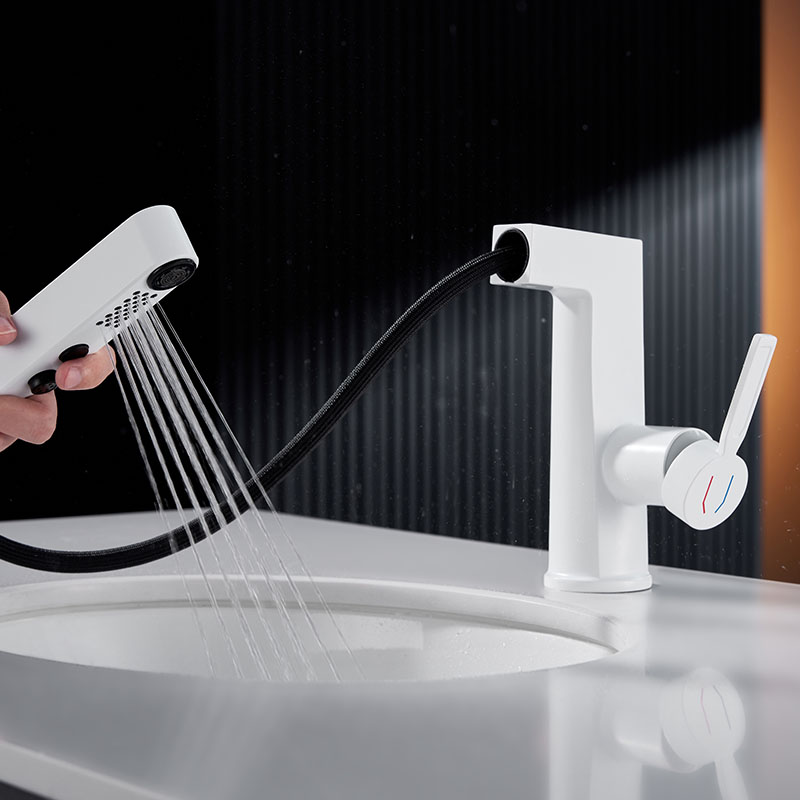How The Sanitary Ware Industry Copes With The Impact Of Global Raw Material Price Fluctuations
Global raw material price fluctuations have become one of the biggest challenges facing the sanitary ware industry. The prices of core raw materials such as copper, zinc, stainless steel, and plastics are affected by multiple factors such as geopolitical conflicts, rising energy costs, and supply chain disruptions, showing violent fluctuations. In 2022, the price of London copper once exceeded US$10,000/ton, the price of zinc rose by 35% year-on-year, and the price of PVC resin fluctuated by as much as 40%. This fluctuation directly squeezes corporate profits and forces the industry to carry out systematic innovations from supply chain management, product design to business models.
1. The impact mechanism of raw material price fluctuations
Cost structure impact
The raw material cost of sanitary ware products usually accounts for 50%-70%. Taking copper faucets as an example, copper accounts for 60% of the production cost. If the copper price rises by 20%, the total cost will increase by 12%, and the average net profit margin of the industry is only 5%-8%, and companies are very likely to fall into losses.
Supply chain vulnerability exposure
The risks of companies that rely too much on a single source of procurement have increased sharply. For example, a brand's stainless steel electroplating line was shut down for two months due to restrictions on Russian chromium ore exports, resulting in losses of more than 20 million yuan. In addition, the fluctuation of shipping prices further amplifies the uncertainty of costs.

2. Risk hedging: from passive pressure to active control
Financial instruments lock in costs
Futures hedging: Establish copper and zinc futures positions in LME to hedge against price volatility risks. A company reduced its losses by 18 million yuan in the 2022 copper price surge by buying call options;
Exchange rate hedging: For imported raw materials settled in US dollars, use forward exchange settlement agreements to avoid exchange rate risks and control fluctuations within ±3%.
Diversified procurement and regional layout
Nearshore supply chain: set up a zinc alloy die-casting plant in Mexico to supply the North American market, shorten the transportation cycle from 60 days to 7 days, and reduce logistics costs by 40%;
Multi-source supplier system: copper suppliers increased from 3 to 8, covering South America, Africa (and Southeast Asian mining areas, bargaining power increased by 25%.
Dynamic inventory management model
Safety stock algorithm: according to the historical price volatility and order cycle, set the copper inventory threshold (such as 3 months of consumption), and start over-purchase when the price is 10% lower than the average;
Joint procurement platform: small and medium-sized enterprises centrally purchase PVC resin through industry associations, the purchase volume increased by 5 times, and the unit price decreased by 8%.
III. Process innovation: a technological breakthrough from cost reduction to value-added
Material substitution and lightweight design
Lead-free copper alloy: use Silicon brass replaces traditional lead brass, and the copper content is reduced from 85% to 60%, the cost is reduced by 15%, and it is NSF certified;
Carbon fiber reinforced plastic: The bathroom cabinet frame uses CFRP to replace stainless steel, which reduces the weight by 50%, increases the impact strength by 3 times, and reduces the raw material cost by 20%.
Lean manufacturing and waste recycling
Additive manufacturing: Directly mold complex faucet structures, the copper utilization rate is increased from 60% of traditional casting to 95%, and the waste recycling cost is saved by 30%;
Closed-loop recycling system: After the old shower is disassembled, the copper parts are re-smelted with a purity of 99.9%. The cost of recycled copper per ton is 12,000 yuan lower than that of new copper, and carbon emissions are reduced by 65%.
Digital process optimization
AI energy consumption management: Dynamically adjust the current density of the electroplating line through machine learning, and reduce nickel consumption by 12%, Electricity expenses dropped by 18%;
Digital twin quality inspection: Virtual simulation of ceramic firing process, the cracking rate of the green body dropped from 8% to 1.5%, and the annual reduction of raw material waste exceeded 500 tons.
IV. Ecological reconstruction: from zero-sum game to value symbiosis
Vertical integration of the industrial chain
Upstream equity participation in mines: A sanitary ware group acquired a 5% stake in the Congolese copper-cobalt mine, locking in the supply of copper mines for the next three years, and reducing cost volatility by 40%;
Downstream joint research and development: jointly build a "fine decoration material library" with real estate developers, purchase according to fixed price agreements, and digest price fluctuation risks.
Product service transformation
Subscription model: users pay the "smart toilet health service fee" monthly, the company bears the hardware cost, and makes profits through urine test data value-added services to offset the pressure of raw material costs;
Shared manufacturing platform: small and medium-sized enterprises rent smart toilets Casting production line, pay by usage, equipment utilization rate increased to 85%, fixed cost allocation decreased by 60%.
Green premium capture
Low-carbon certified products: Bathroom accessories made of recycled aluminum passed EPD certification, and the premium rate increased by 15%;
Carbon asset development: Photovoltaic roof and waste heat recovery system generate 12,000 tons of CCER each year, and trading income covers 20% of energy costs.
V. Future trends: Technology reconstructs cost logic
Blockchain transparent supply chain
Through distributed ledgers to record the full process data from copper mining, smelting to finished products, price fluctuations can be traced, and the response speed of procurement decisions can be increased by 80%.
Hydrogen metallurgical technology
Green hydrogen replaces coke steelmaking, which can reduce the cost of stainless steel production by 30% and carbon emissions by 85%. The domestic pilot project has been launched in 2025.
Synthetic biomaterials
Gene-edited microorganisms synthesize bio-based plastics, and the raw material cost is 40% lower than that of petroleum-based plastics, and they are completely degradable.
Fluctuations in raw material prices are both a crisis and a catalyst for industry reshuffles. By using financial instruments to hedge short-term risks, technological innovation to restructure cost structures, and ecological cooperation to reshape value distribution, sanitary ware companies can not only withstand cyclical shocks, but also gain the first opportunity for technological upgrading and market expansion. In the future, whoever can take the lead in achieving the triple breakthrough of "material science + digital technology + business model" in cost control will be able to remain invincible in the shock.


